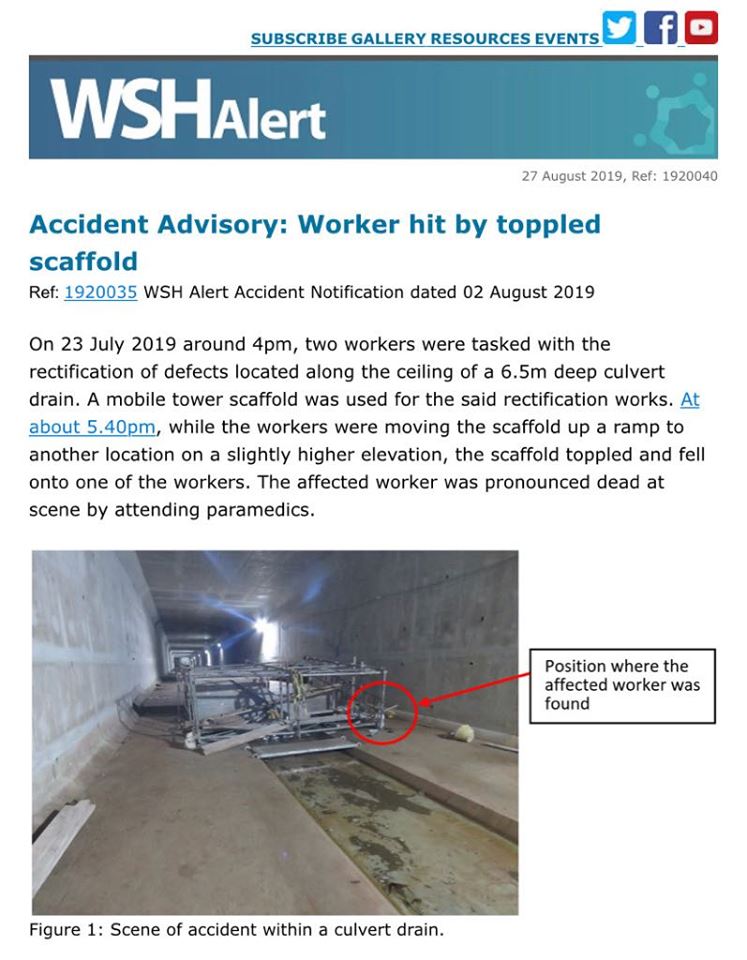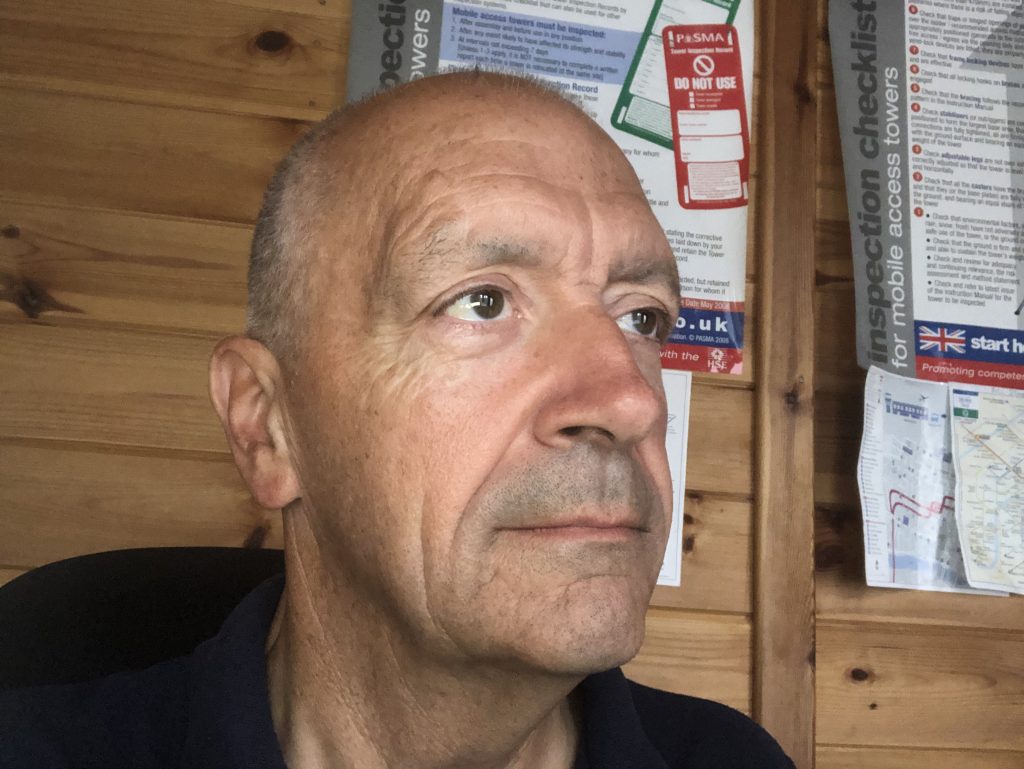WSHAsia: “Ask The Expert” Reviews on A Similar Case of A Worker Hit by Toppled Scaffold.
This Ask The Expert section is to allow experts to express their views on relevant scenarios that had taken place.

On the 23rd of July a worker was reported to have been hit by a toppled scaffold based on the bulletin by Tripartite Alliance for Workplace Safety and Health (WSH Council). Observations were reviewed based on the case. Mr Don Aers, who is known as the technical director of the Prefabricated Access Suppliers and Manufacturers Association (PASMA) with a 25 years of experience in this field. PASMA is an international non-profit association for the mobile access tower industry. Mr Don had stated his point of views on this matter in an interview session with WSHAsia.
Is a mobile Tower Scaffold the right selection of work at height?
A mobile tower can be a good solution to where it is necessary to relocate the working platform. If the ground condition over which the tower will be moved to includes things like –kerbs, steps, holes, soft or uneven surfaces, slopes or ramps, could cause the tower to become unstable and overturned – So, the ground conditions should be modified to make it suitable. If that is not possible then the tower should be dismantled and rebuilt at a new location or the usage of alternative equipment should be considered.
It was indicated that the workers were trying to move the scaffold up a ramp to another location on a slightly higher elevation, however the scaffold toppled.
Is it the correct way to move a mobile tower scaffold?
Towers must be moved with the utmost caution and only or under the supervision of a competent person who has been PASMA trained. Before moving, checking the suitability of the intended route to ensure that there are no obstructions, both on the ground level and overhead cables. Make sure to see any holes, ducts, pits or gratings are securely covered. The tower must only be moved by applying manual effort at or near the base of the tower and there should always be enough operatives to control the movement. Always push the tower and never pull it towards you.
What should be the safer procedures to move the scaffold?
The report indicates that the culvert was 6.5 m high so the working platform would be around 4.5 to 4.75m. Assuming the tower is complied with the relevant design standard for mobile towers (EN 1004), that would mean it should have been fitted with the correct size of stabilisers. That information would be contained in the manufacturer’s user instructions and the operatives, or the person supervising them, should have a copy.
When moving a tower, the stabilizers should be left in position but lifted to provide a maximum of 25 millimeters of ground clearance. If the angle of the ramp meant that the maximum clearance of 25 millimeters under the stabilizers would be insufficient for the movement then that would indicate the angle of the ramp was too steep.
PASMA recommends that when moving a tower, no people or materials should be on it and the tower should be reduced to 4 meters platform height. After each movement of the tower the castors should be locked and the stabilizers should be lowered. Rebuild the tower to the required height and then check to make sure if everything is correct. Use a spirit level to ensure that it is upright, resetting to its adjustable legs and stabilizers as necessary.
What do you think had gone wrong?
If the tower’s height was not reduced to 4 meters before making any movements or the stabilizers were not fitted properly or they had been lifted too much for any movement, then that might account for the tower to become unstable –even if the angle of the ramp was quite low. If the angle of the ramp was too high, then even these measures might not have been enough to prevent it from overturning. Of course, having enough people to carry out and control the movement is important but once a tower becomes unstable because it is leaning too much, then it is almost impossible to stop it from overturning. All these things could have been the cause of the accident to occur and especially if the people using the tower were not properly trained and competent. So, the actual reason why it went wrong is most probably a lack of good training and a lack of planning.
What does your organisation have that could have prevented such incident?
Safe work at height is all about planning and assessment. Everyone involved in work at height such as managers, supervisors and operatives need to be competent to do that. In this case a competent person planning for the work should have spotted the issues involved in the movement of the equipment. PASMA approved training centers in Singapore offers a range of courses for managers, supervisors and operatives involved in the use of mobile tower. It is accepted and proven that proper training significantly reduces the risk of accidents like this from occurring. PASMA also has a range of educational materials that can support and reinforce training such as the PASMA Code of Practice for mobile towers.
What other ways that you could share in order to improve the level of safety?
Working at Height can risk seemingly the smallest decisions made which can literally affect our lives and the lives of others. Every day we make those decisions and every day we should remind ourselves of their importance and maybe take a moment longer to think through about certain things properly.

Disclaimer: The assertions in this interview are based on the information from the WSHC Alert and the opinions expressed are solely based on the views of the expert. The published editorials and all other content is published in good faith. WSHAsia will not be held responsible for the content of such views nor can be held liable for any direct or indirect damage that may arise from such views.
